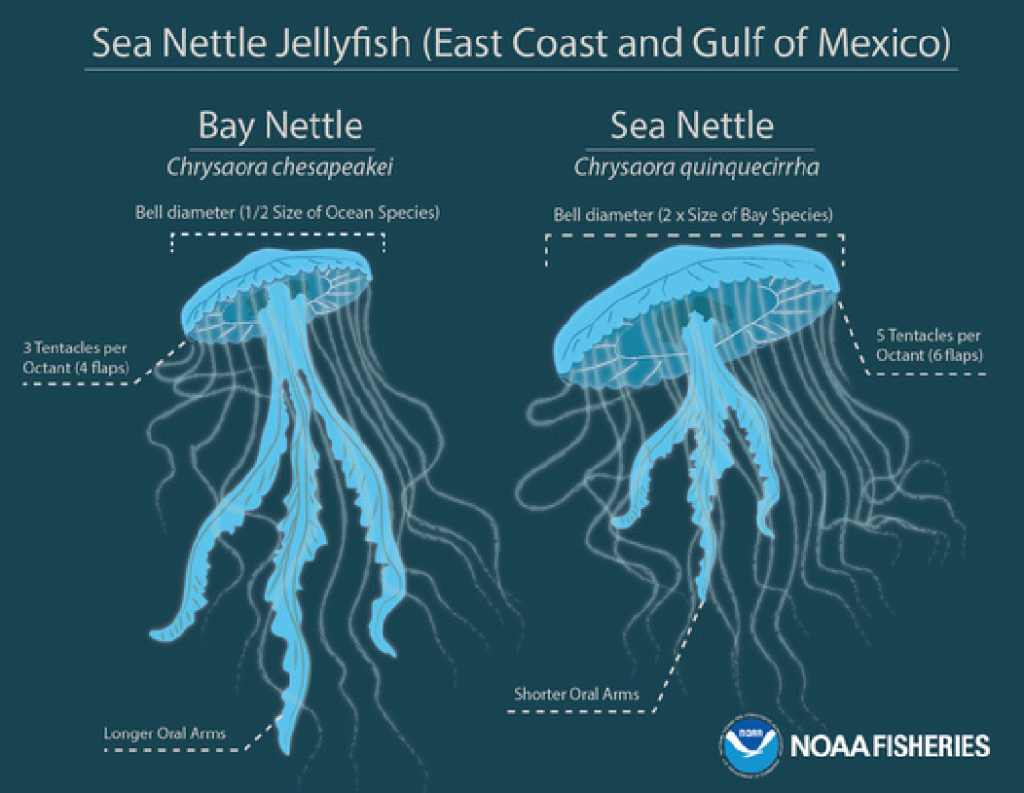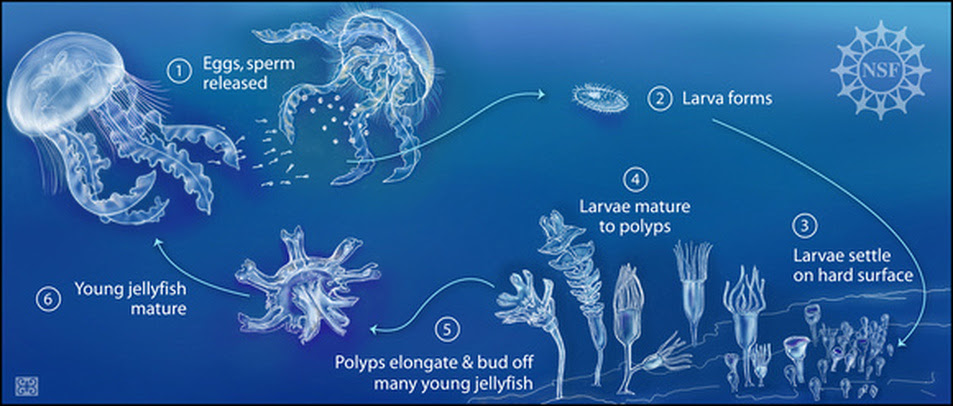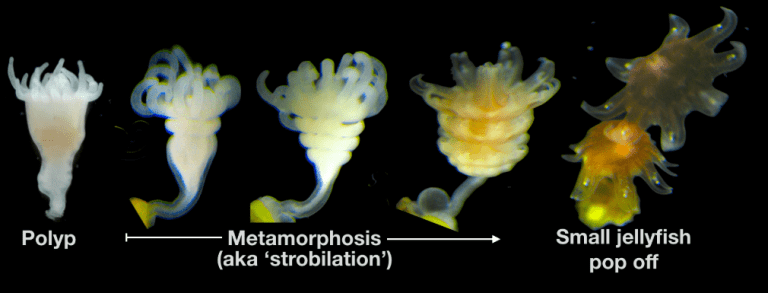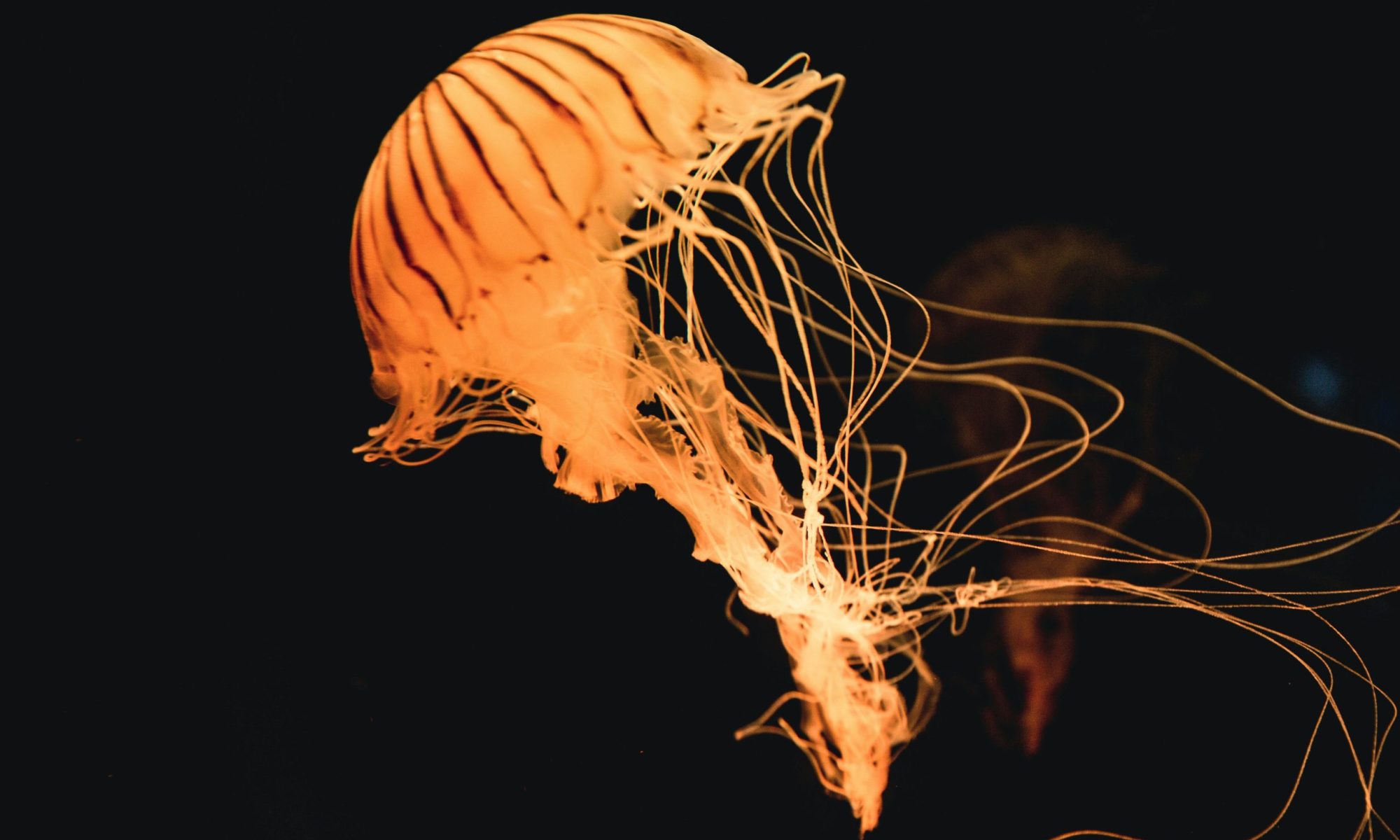Thank You for your interest in Stop the Stings Campaign that uses Berkeley Dive Team’s ‘jellyfish scrubbing’ method to reduce Bay Nettle populations . Which was confirmed by MSU’s (Montclair State University) Dr. Paul Bologna who concluded that reductions in (junior jellyfish) ephyrae did occur at locations that were scrubbed and Anthony Tamberelli who recommended that the abatement efforts be expanded to stop more junior jellyfish spreading to new locations before they become stinging adults.
Please fill out the information request below, if you want to learn more about how Berkeley, Toms River and Brick lagoon communities plunged into action
Bay nettles are stinging jellyfish found in Bays (Sea Nettles are in the Ocean). Their diet consists mainly of fish eggs, larva, zooplankton, and other small and drifting animals. Unlike other native species found in the bay, bay nettles are able to thrive in warm waters with low oxygen levels. This type of habitat hinders its prey which makes them slower and easier to catch. As bay nettle populations rise in these more compromised water bodies, populations of native species will fall.
Bay Nettles in Barnegat Bay

An increase in stinging jellyfish could mean the decline of fishing and recreation on the bay. If left unchecked, their growth and diet will deplete the bay of the species that keep it healthy. For us, swimming, sailing, and anything else that involves going into the water could become undesirable when it is no longer a flourishing ecosystem of diverse life.
Lifecycle of the Bay Nettle

Scientists attribute the rise of jellyfish in Bays to a number of factors: pollution, warmer water and development of the bay’s shoreline. When nutrient pollution pours nitrogen into the bay, its oxygen levels decrease, which suffocates larger competition. Bay nettles and other kinds of jellyfish survive in warmer, hypoxic (low oxygen) waters. Development provides more bulkheads, pilings, and floating docks that can hold thousands of polyps. Which asexually produce millions of ephyrae, that swim free to other locations as small jellyfish, and mature into stinging adults.
Bay Nettle Polyps

Bay nettles begin their life cycle in a polypoid stage when they are only millimeters long and have small tentacles used for feeding. During this polyp stage, the bay nettles must attach or settle onto a sturdy surface like bulkheads and floating docks. Once attached, a single polyp can reproduce asexually by “cloning” multiple new jellyfish. The medusa stage of the bay nettle’s life has six steps before it becomes an adult medusa. At every step, the medusa grows in size and number of tentacles until it takes its familiar shape, with the large top or bell and up to 16 tentacles hanging down from the bell.
The study was developed using New Jersey Department of Environmental Protection grant.


